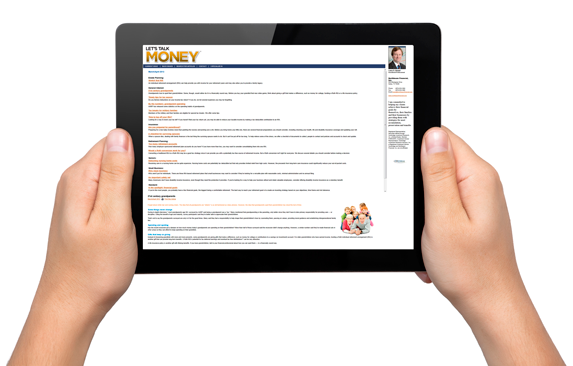MANAGING RISK AND MEETING GOALSMarket swings often prompt investors to reassess their portfolios. As you evaluate the efficacy of your investments in light of your financial goals, it’s important to revisit two key principles—asset allocation and diversification. Any long-term investment plan will most likely have to weather market “ups” and “downs.” Softer markets often create opportunities for purchasing shares at lower prices and, through dollar cost averaging, you may be able to average a lower cost per share over time. Maintaining a regular investment program and balancing your portfolio to account for a level of risk you find comfortable are important to the overall success of your financial strategies.
Asset Allocation and Diversification The main objective of asset allocation is to match the investment characteristics of the various asset categories (equities, bonds, cash, etc.,) to the most important aspects of your personal investment profile—that is, your risk tolerance, your return and liquidity needs, and your time horizon. Asset categories generally react differently to changes in the economy. If you have assembled what is known as a “hodgepodge” portfolio, you may be unaware of the extent to which your investments are (or are not) consistent with your objectives. Since various investment categories have unique characteristics, they rarely rise or fall at the same time. Consequently, combining different asset classes can help reduce risk and improve a portfolio’s overall return. While there is no set formula for asset allocation, guidelines can help you accomplish certain goals (for example, the need for growth in order to offset the erosion of purchasing power caused by inflation). Diversification is an investment strategy used to manage risk for your overall portfolio, using techniques such as mixing your holdings to include a variety of stocks (small-cap, mid-cap, and large-cap), mutual funds, international investments, bonds (short- and long-term), and cash. By varying your investments, diversification attempts to minimize the effects a decline in a single holding may have on your entire portfolio. Dollar Cost Averaging To maintain a regular investment program, many investors make dollar cost averaging an integral part of their overall savings plan. Using this systematic investing technique, an investor buys more shares when prices are low, and fewer shares when prices are high. This may result in a lower average cost per share than if you were to purchase a constant number of shares at the same periodic intervals or make a single investment. Dollar cost averaging cannot guarantee you a profit or a lower cost per share, nor can it protect against a loss. However, it is a strategy that reinforces the discipline of regular investing and offers a systematic alternative to “market timing.” In order to take full advantage of dollar cost averaging, you need to consider your ability to continue purchases through periods of low price levels. Periods of falling prices are a natural part of investing, as are strong market intervals. To help ensure your investing strategies remain aligned with your financial objectives, it is important to regularly review your portfolio. IVSAAD00 Copyright © 2006 Liberty Publishing, Inc. All rights reserved. |
QUICK CONTACTREAD OUR FINANCIAL
E-NEWSLETTERS TODAY! I get tremendous gratification from encouraging people to focus clearly on their future final success and security.
Larry Brasel, President
|

|
|




